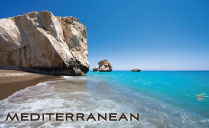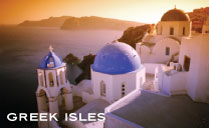Ionian Sample Itinerary
Day 1:
Athens to Zakynthos
Day 2:
Zakynthos to Kefalonia
Day 3:
Kefalonia to Lefkada
Day 4:
Lefkada to Parga
Day 5:
Parga to Ithaki
Day 6:
Ithaki to Sami
Day 7:
Sami to Nafpaktos
Day 8:
Nafpaktos to Athens
ZAKYNTHOS
Zante the third in size of the islands of the Ionian Sea, the green island of poetry, of song and love, the native land of D. Solomos, the writer of the Greek National Anthem but also that of St. Dennis, the Patron Saint. Rich in beauty and tradition, both historical and cultural, Zante is the “ideal” of any traveller with an exploring mind. Discovered in 1897 the blue caves can be found on the northern tip of Zante not far from Cape Skinari. Famous for their stunning shade of blue seas and rock formations. Smugglers Cove also known as Navagio has to be the most famous beach on the island if not in Greece. At the famous bay of Laganas you can enjoy one of the longest and most sandy beaches in the Mediterranean. Greece is the only European country where the logger headed turtles (Caretta, Caretta) nest and Zante is the most important nesting area in the Mediterranean. The national marine park of Zante objective is to preserve the natural environment
KEFALONIA
Kefallonia is the largest of the Ionian islands. The capital of the island is the town of Argostoli. It is a lively place, especially in the summer months, with much of the action taking place around its main square (panoramic view, will take you to external site). Argostoli is a modern town that offers many entertainment and shopping opportunities, while still maintaining its charm. Argostoli, as well as all the other towns and villages of the island, was completely rebuilt after the earthquake that struck in 1953. The only area that was spared from the earthquake was Fiskardo. For this reason Fiskardo retains the old architecture, making it the most beautiful village on the island. The second largest town of Kefallonia is Lixouri, on the Pali peninsula. The Mellisani Cave is an underground seawater lake featured in most guidebooks because of the amazing colour of the sea.
LEFKADA
It is the fourth largest island of the Ionians and has impressive landscapes, long golden sandy beaches with colour as if the blue of the sea was mixed with bleaching water, traditional villages, a charming capital, some animated beach resorts with many restaurants and bars, Byzantine churches, archaeological sites, perfect wind conditions for windsurfing and kite surfing. Agios Nikitas, Porto Katsiki, Kathisma, Vassiliki are must – see beaches as they are some of the most beautiful beaches of the world.
PARGA
Parga is a picturesque town in the province of Epirus. It is nested between lush green hills and the clear waters of the Ionian Sea. Parga is a busy town in the summer with lively streets packed with a healthy tourist population that mingles busily in the narrow passages and the coffee shops that line its promenade. It seems to be a favorite destination for tourists from all over the world. A stroll through the streets of Parga reveals an “island flavor” with the multitude of the tourist shops and tavernas lined up on both sides and the carefree tourists that constantly stroll up and down the narrow corridors. A short walk through the steep streets would take you to the castle that reveals a bird’s eye view of the ceramic rooftops of the town, the small beach in its center, and on the other side of the hill a glimpse of the large and very popular Valtos Beach where swimming is best.
ITHAKI
Throughout the ages Ithaki has been known as the home of Odysseus. For years Homer’s hero wandered before he finally returned to his island kingdom. The west coast of the island is steep and almost barren in contrast to the green, gentle shoreline on the east. The capital and largest settlement is Ithaki or Vathi: its red-roofed delightful houses set amidst enchanting scenery at the end of the deep closed bay of Molos. Three kilometres to the northwest lies the so-called Cave of the Nymphs (Nimfon Cave). Also worth visiting is the medieval Monastery of the Archangels at Perahori. North of the capital and 600 metres above sea level, the Kathara Monastery (Moni Katharon). Kioni and Frikes, typically Ionian villages, on the northeast coast are unspoilt, wonderful places for a short excursion or an extended sojourn.
SAMI
The village of Sami lays 2 kilometres away from the capital of Kefalonia, coil up in the bay of the same name. its port is the second most important port after the main port of Argostoli and proposes regular ferries going to Patras, Ithaca and Italy. Interesting monasteries, astonishing underground lakes and superb caves are located in the area as well as various beautiful sandy beaches.
NAFPAKTOS
From the towering of Venetian Castle on the hill above the city you can see all of Nafpaktos. Its expansive beaches, pastel buildings set beside Venetian Walls, and veil of pine, palm, orange, and elm, make it one of the most beautiful cities of the Gulf of Corinth. Green enough, plenty of waters, big old platans, clear sea, spotless yards with beautiful gardens, a marvelous fort and small port together which is the smallest and the most beautiful in all over Mediterranean and its powerful castle that is “testifier” of its adventurous history.
ATHENS
The Capital of Greece. Within the sprawling city of Athens it is easy to imagine the golden age of Greece when Pericles had the Parthenon (the most eminet monument of the ancient Greek archtitecture) duilt. Athens is built around the Acropolis and the pinnacled crag of Mt. Lycabettus, which the goddness Athena was said to have dropped from the heavens as a bulwark to defend the city. The suburbs have covered the barren plain in all directions and the city is packed with lively taverns and bustling shops.





